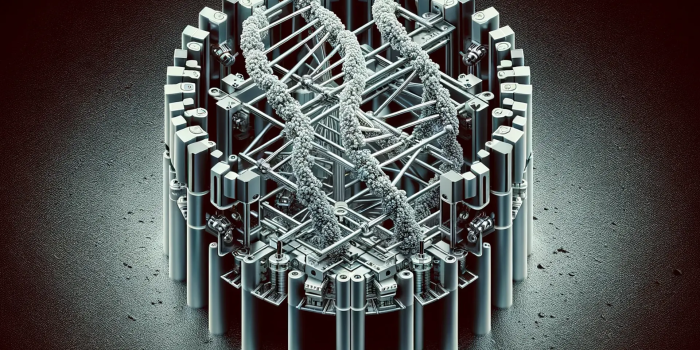Scientists from New York and Ningbo, China, have achieved a groundbreaking feat by creating minuscule robots constructed from DNA that can reproduce themselves. This advancement holds potential for transformative applications, from combating cancer cells in the bloodstream to environmental tasks like cleansing toxic waste from oceans.
The research, led by Feng Zhou from New York University’s Department of Physics and the Chinese Academy of Sciences, introduces nanoscale industrial robots capable of intricate tasks with precision. Feng Zhou elucidated that these nanorobots, each a mere 100 nanometers wide, can manipulate various segments of DNA strands, aligning them accurately for seamless “welding” and subsequent replication. The unique three-dimensional folding of DNA, a departure from previous 2D constructions, enables limitless self-replication. Zhou highlighted the potential of these nanorobots in nanomanufacturing, presenting a novel tool/technology that could pave the way for complex and valuable nano- and microdevices.
A nanomaterials specialist, Andrew Surman, acknowledged the challenges of assembling such intricate structures, emphasizing the critical role of proper folding in ensuring functionality. Zhou’s team builds upon four decades of progress in DNA nanotechnology, envisioning programmable and controllable nanomachines and robots with applications in nanomedicine, diagnostic sensing, and nanorobotics.

Richard Handy of the University of Plymouth noted this technology’s therapeutic potential, envisioning a scenario where DNA scaffolds could construct enzymes for individuals with genetic deficiencies. This approach could address insulin secretion problems in people with type 2 diabetes.
The study’s implications extend to science fiction, reminiscent of K. Eric Drexler’s cautionary tale in “Engines of Creation.” Drexler’s nightmare scenario, coined “gray goo,” describes the catastrophic replication of nanobots consuming all biomass. However, Zhou’s team assures that their work, outlined in the report “Toward three-dimensional DNA industrial nanorobots,” published in Science Robotics, is a calculated step forward, harnessing the power of DNA for controlled and beneficial applications in medicine and environmental management.
Source: Science Robotics


